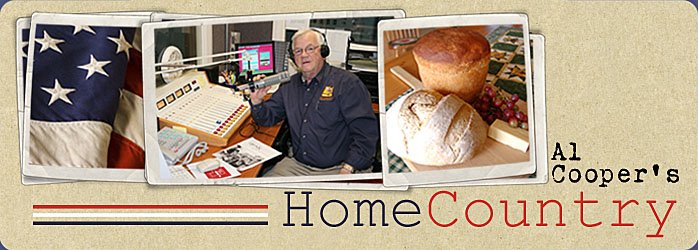As the ongoing Hurricane Harvey disaster unfolds before our eyes
I cannot help but be carried back 13 years in time to another August and
another storm, that one with the assigned name of Hurricane Charley.
Charley came ashore on
Florida’s Gulf coast near Punta Gorda on August 11, 2004 as a category 4 storm
with winds of 145 mph. After doing unprecedented damage there and at Port
Charlotte, it headed north into the heart of southeast Florida and into Hardee
County where it was destined to devastate the county seat of Wauchula. Before
it was done it would take 18 lives directly and do 16.3 billion dollars in
damage.
The state of Utah had only recently
become a signatory to an interstate disaster assistance compact, and when
Florida sent out a plea for outside aid Utah’s Emergency Management leaders responded.
I immediately volunteered and became one of a task force of four to represent
Utah in response to the stricken state. Flying into Tampa, we were immediately
assigned to Hardee County where local responders had been overwhelmed by events
which crippled the county seat of Wauchula and the surrounding communities.
When we arrived rescue efforts were still in progress and first responders were
still involved in a door-to-door search for people trapped by fallen trees and
debris in homes and workplace. There was no electric power and would not be for
weeks to come and only one limited fuel source was operating on generator
power.
The management of response and recovery
efforts was in the hands of the Public Safety Director whose home and
everything he owned had been totally destroyed. He and his family were living
in the downstairs of the Public Safety building in who’s upstairs operating
headquarters we would find ourselves huddled for the next six days with a
dedicated cadre of local volunteers directing every life-saving and public
safety effort for a wide area of suffering. Every single person answering
phones, making decisions and dispensing resources in that room had likewise
lost all or part of their own home.
At first it seemed impossible, in
our clean clothes, intact footwear and fresh clean-shaven faces, to fit in with
that roomful of tired overworked and weary “veteran” responders, but by the
time we departed a week later they would be our “brothers” and “sisters”, and a
cheer for Utah would go up from the tear-stained faces of everyday heroes
handing out sincere hugs and kisses.
It was decided that we could be of
most immediate and effective use to the command structure if we took charge of
managing volunteers and donations, one of the designated and important Incident Command functions. Dividing our
duties between the phone desk at headquarters and the volunteer assignment
point in the field, we would soon become immersed in one of the most personally
gratifying areas of disaster operations; one in which we had direct one-on-one
personal contact with everyday Americans arriving by the hundreds each day,
dedicated to the most magnificent of human motivations – the thing we call loving thy neighbor. And come they did,
with chain saws and tools, with prepared meals to feed a crowd or a few,
individually or more often by the whole-family, from as far away as Tampa and
Orlando. Since we had 5,000 lost or homeless domesticated pets housed at the
Fair Grounds, we had a ready-made and safe arena in which to employ the
children who wished to perform a service while their parents were assigned
elsewhere.
Most often assigned to the desk at
the Command Center (where I often and gladly manned the desks of other
functions as needed: infrastructure management, animal services, diesel fuel
supply for dozens of commercial-size generators or emergency medical response).
It was here I came to understand the broad area of donations and donors. In a
single hour (we operated the center in overlapping 12 hour shifts) I might hear
from a PETCO semi driver approaching town with 20,000 pounds of pet food
wanting to know where to deliver, a loaded-to-the-gills WAL-MART van wanting a
location to set up, a family wishing to donate a meal of
spaghetti-and-meatballs to feed 100 seeking directions to an appropriate
parking lot, or an expert on Florida alligators offering his needed services to
deal with one of our ongoing problems. Arriving daily would be generous
individuals with money (large and small), often preferring to donate it to
“local” rather than national institutions (a common sentiment I found in such
disasters.) I always had a deserving and proven alternative in mind including one
group who helped families with expensive power line problems on their own
property, or other repairs uncovered by utility companies or insurance.
Many of the local residents of rural
Wauchula were non-English -speaking and too concerned by their uncertain citizen
status to even come forward and admit they needed help let alone sign their
names to a questionnaire. (One of my pleasures was to drive our van during
time-offs into such residential areas where I could invite little kids inside
for ten minutes of air conditioning
comfort and watch the sheer joy on their faces. (And thrill to their joyful “high-fives”!)
Later, I would serve at FEMA
headquarters at Port Charlotte where I would gain important Disaster Management
skills, but from where I would have given anything to be back in the “front
lines” touching hands with real people and experiencing the wonderment of American Volunteerism at its finest.




Hello, Al,
ReplyDeleteDo you remember Steve Hess? He & I are trying to find your contact information. We are hoping to come see you & Shirley since we’re in the St. George area today & tomorrow (October 27th-28th 2017). Hope we can find you home.